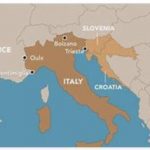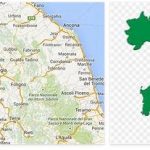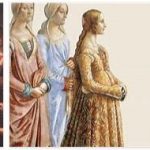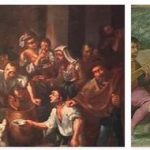It was Augustus who had the Salassi of Val d’Aosta finally tamed in 25 BC. C., by A. Terenzio Varrone Murena; the Reti and the Vindelici in 15 a. C., by Drusus and Tiberius, and all the other Alpine peoples, who, although previously defeated several times, had nevertheless continued to give the Romans a lot of trouble. The complete submission did not end until 6 a. C., and then Italy erected to Augustus, on the southern slopes of the Alps, above Monaco, a great monument that swept over the Tyrrhenian Sea, and glorified the pacification of 46 definitively subjugated peoples. At that time the Augustan border of Italy was traced from West to East as follows: Varo, Monviso, Piccolo and Gran S. Bernardo, S. Gottardo, Rhaetian Alps, Carnic and Julian Alps, Arsia river.
According to ELAINEQHO.COM, the position of Italy in the structure of the Roman Empire. – As for the republican era, so for the imperial era the political history of Italy is that of the development, the apogee and the decline of the Roman state (for an analytical treatment, see Romans: History). But the salient fact of this story cannot be overlooked, from the Italian point of view. And it is this: that, due to a very different set of circumstances – first of all the vastness of the empire itself, its complex organization, the essential requirements of its defense and organization – Italy, which had also created it, ended up seeing his initial position of pre-eminence in the empire has greatly diminished: so that – although this may at first sight seem paradoxical – only with the dissolution of that team did Italy set out on a new history. Which, however, continues and does not forget that of Rome and her empire, indeed, with the Church, which continues the universality of the Empire, it maintains its function of spiritual primacy; but only after the fall of the empire did Italian history unfold autonomously and with its own destinies: the arduous conquest of a political form for the national unity of the Italian people.
The republican period had made Italy the lady of the world: the Italic legionaries were the backbone of the Roman armies and the Italic merchants were guaranteed the highest privileges in all markets. But the passage from the republic to the empire was to a lesser extent a consequence, in most part itself the cause of the transformation of these conditions of privilege. If the political necessities by now made it necessary to seek the collaboration of the provincials, the economic factor also pushed the emperors to equalize Italy and the provinces. After the period of social turmoil and wars, the provinces naturally resumed the economic importance they deserved due to the richness of the soil and subsoil, due to their geographical situation. Especially Gaul, Spain, Egypt and Asia became first-rate economic centers. At first, under the Julio-Claudian dynasty, it seemed that Italy should also gain from the economic revival of the whole empire. But the growth of prosperity did not last: the emancipation of the provinces led to the decline of Italy. The large exportation of oil and wine, source of prosperity, decreases and therefore the production of wheat increases again, which however will never be enough for the needs of the Italians, for which it is necessary to make up for it with imports, especially from Egypt. But above all the small owners decay, and therefore a large estate is established which worsens the pre-existing conditions and therefore contributes to a further decline of the Italian economy, already visible in the Flavî and Antonini period. To which economic decline is accompanied by the political one. The Italians do not have much will to serve in the legions, and in general the emperors willingly comply with this tendency of theirs, because they feel safer with legionaries drawn out of Italy. Therefore, from Vespasian onwards, the Italian levers become an exception. With this, in an empire in which the army speaks the decisive words, Italy is deprived of the possibility of making its voice heard. Administrative autonomy was greatly diminished by the imperial authority. At the time of Trajan the curatores , who passed easily from the control of the accounts of the single cities to their general superintendency; and Adriano aggravated the limitation of autonomy with the introduction of the four consulares for a new judicial regime, consulares which, abolished due to the protests of the Italians by Antonino Pio, were in fact reconstituted, perhaps with greater attributions, by Marcus Aurelius under the name of iuridici. The participation of the Italians in the ruling class of the empire also decreased: the senators and governors of the provinces, then the emperors themselves, were increasingly chosen from among the provincials. At the same time the old cultural centers of the provinces (Greece, Egypt, Asia Minor) regained their vigor, giving rise to an abundant production in the Greek language (it is no coincidence that Adriano was a Philellian, and Marcus Aurelius wrote in Greek), while new centers they were formed in Gaul, Spain, Africa, which stood up to comparison with the Italian ones.
The economic decline that became general throughout the empire gradually increases, nor were measures like those of Trajan worth to oblige the senators to pledge their capital in Italy and to help the farmers with loans. And the decline was now followed by depopulation, despite which Italy suffered more and more from insufficient supplies, as the disorder increasingly prevented regular communications between the regions of the empire. The edict of Caracalla (212 BC) by making all provincial Roman citizens only sanction the equalization now achieved between Italy and the provinces. Already submitted in the century. III to a regime of correctores , whose differences from correctores provincials disappeared soon, Italy will become one of the twelve dioceses of the Empire with Diocletian, it will lose its capital position with Constantine, it will immediately lose its administrative physiognomy with being aggregated into a single prefecture with Africa (and in a certain period with Illyricum).
However, not only for its past, but also for its permanent spiritual and cultural life, to which the papacy conferred new dignity and new vigor, Italy will always remain one of the centers of the life of the empire, nor will it ever obliterate itself from all the awareness of the fecundating and civilizing function that it had radiated for the Roman world. The more the detachment between the basically Hellenistic East and the Romanized West is deepened, the more clear will be the function of Italy as the center of the West. This was seen above all from the death of Theodosius (395 AD) onwards, and this function did not cease even when the whole West was prey to the barbarians, because the empire was replaced within certain limits by the Church.








